
Balanced Modulator FET circuit Suppression of Carrier DSBSC
Learn more about this topic in Chapter 25 of.http://www.amazon.com/Teach-Yourself-Electricity-Electronics-5th/dp/0071741356/
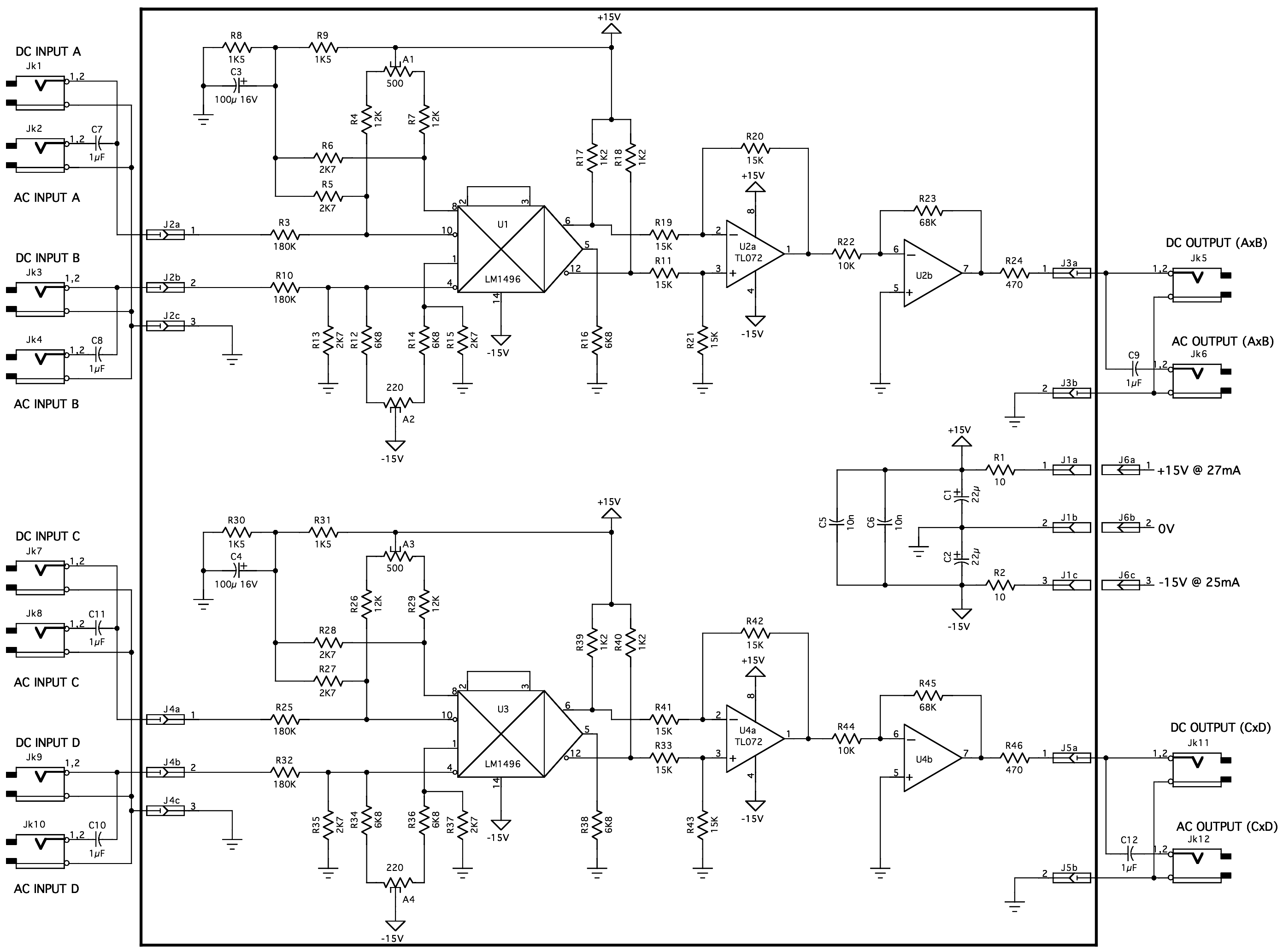
index.thml
This circuit note discusses basic LVDT theory of operation and the design steps used to optimize the circuit shown in . Figure 1 for a chosen bandwidth, including noise analysis and component selection considerations. LVDT. Figure 1. Universal LVDT Signal Conditioning Circuit (Simplified Schematic: All Connections and Decoupling Not Shown.
Balanced Modulators
Two balanced modulator circuits using diodes and transistors as nonlinear devices are shown in Figs. 22.33 (a) and 22.33 (b). It is assumed that both diodes and transistors used in circuits shown in Fig. 22.33 have identical characteristics and that the circuit is symmetrical with respect to the centre tap of the transformer. As the two halves.
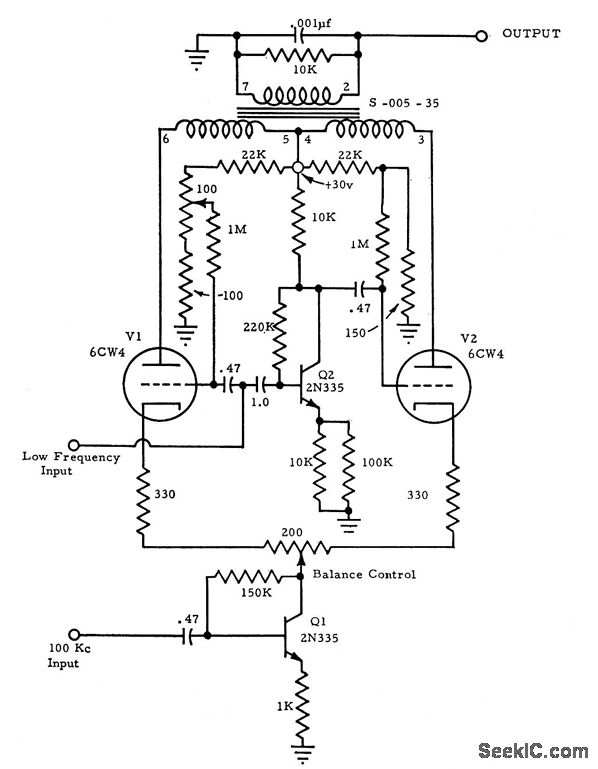
100_KC_HYBRID_BALANCED_MODULATOR Signal_Processing Circuit Diagram
A Balanced Modulator Circuit is a type of modulator that produces an output signal that is the product of two input signals- the message signal and the carrier signal. Balanced Modulator Circuit consists of two or more active devices circuit arranged in a balanced fashion so as to suppress the carrier signal.

D.S.B. balanced modulator
Fig. 4 - The two common diode balanced-modulator circuits are (A) the bridge and (B) the ring. Condensers C 1, C 2, C 3 and C 4 are r.f. by-pass condensers, used to complete r.f. paths without short-circuiting the audio. Fig. 5 - A modulating signal as in (A) gives an r.f. output from a balanced modulator as in (B).
Balanced Modulators
Modulators (sometimes called balanced-modulators, doubly-balanced modulators or even on occasions high level mixers) can be viewed as sign-changers. The two inputs, X and Y, generate an output W, which is simply one of these inputs (say, Y) multiplied by just the sign of the other (say, X), that is W = Ysign(X).
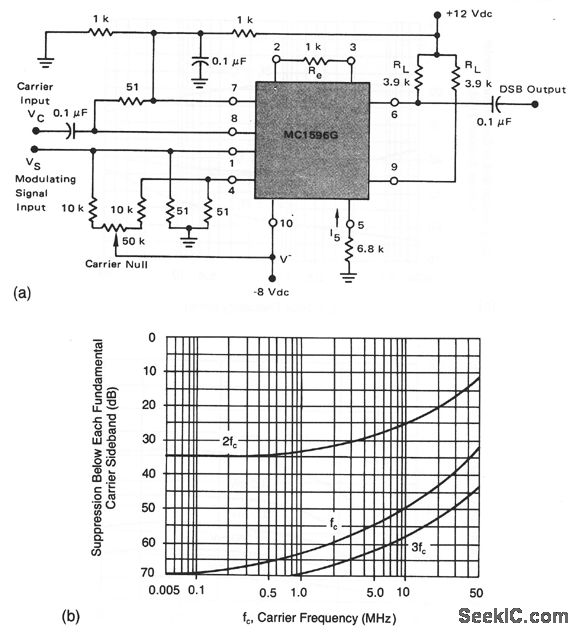
Balanced_modulator_for_SSB_operation Electrical_Equipment_Circuit
Balanced Modulation. Ring or Balanced Modulation is technically known as four-quadrant modulation as it always produces sound, regardless of whether the modulator or the carrier are negative or positive. In addition to the two quadrants described above for amplitude modulation, when the modulator is negative, the positive and negative.
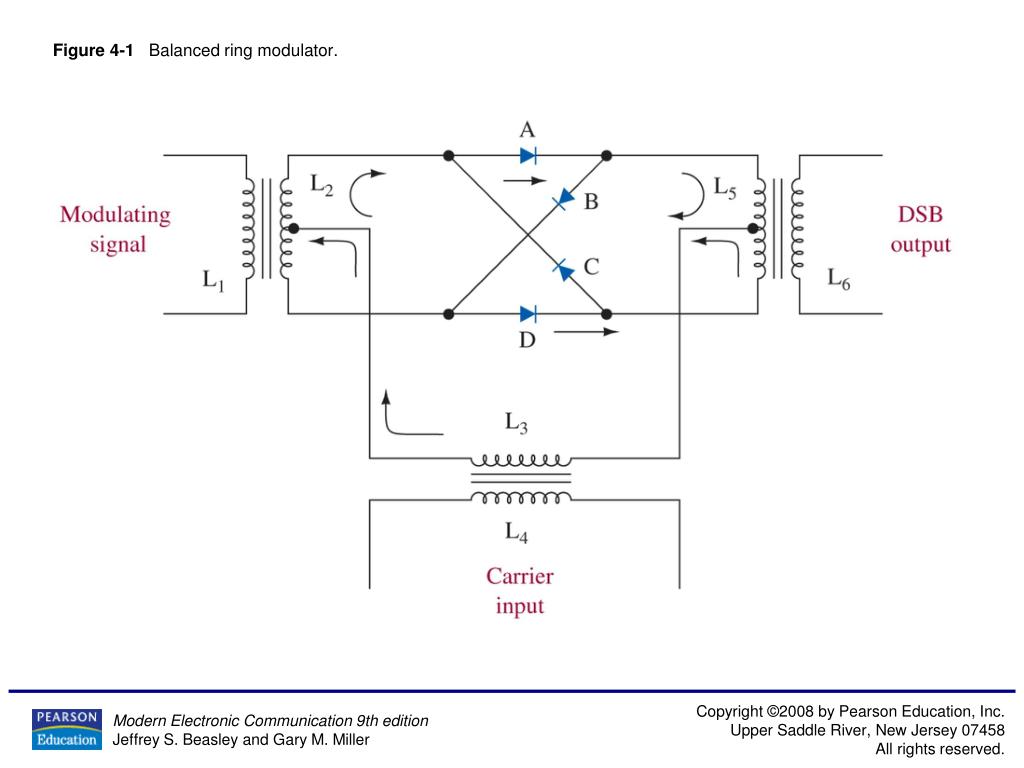
PPT Figure 41 Balanced ring modulator. PowerPoint Presentation, free
Balanced Modulators/ Demodulators These devices were designed for use where the output voltage is a product of an input voltage (signal) and a switching function (carrier). Typical applications include suppressed carrier and amplitude modulation, synchronous detection, FM detection, phase detection, and chopper applications.

More components are installed on the balanced modulator board.
In electronic communications, a balanced modulator is a circuit that produces double-sideband suppressed-carrier (DSBSC) signals: It suppresses the radio frequency carrier thus leaving the sum and difference frequencies at the output. The output waveform lacks the carrier, but still contains all the information a traditional AM signal has.

Diode Modulators, April 1953 QST RF Cafe
Therefore, a balanced modulator may be defined as a circuit in which two non-linear devices are connected in a balanced mode to produce a DSB-SC signal . In this article, we shall discuss a balanced modulator circuit using diodes . Fig.1 shows the balanced modulator using diodes as non-linear device . Fig 1

(a) Balanced BPSK modulator circuit, (b) S 21 of the modulator using
Balanced Modulators/ Demodulators These devices were designed for use where the output voltage is a product of an input voltage (signal) and a switching function (carrier). Typical applications include suppressed carrier and amplitude modulation, synchronous detection, FM detection, phase detection, and chopper applications.
Balance modulator circuit Multisim Live
Balanced modulator consists of two identical AM modulators. These two modulators are arranged in a balanced configuration in order to suppress the carrier signal. Hence, it is called as Balanced modulator. The same carrier signal c(t) = Ac cos(2πfct) c ( t) = A c cos ( 2 π f c t) is applied as one of the inputs to these two AM modulators.

Highlevel balanced modulator for D.S.B.
General Description The LM1596/LM1496 are doubled balanced modulator-de- modulators which produce an output voltage proportional to the product of an input (signal) voltage and a switching (car- rier) signal.

video modulator circuit Video Circuits Next.gr
Excellent gain and carrier suppression can be obtained with this balanced modulator circuit by operating the upper (carrier) differential amplifiers at a saturated level and the lower differential amplifier in a linear mode. The recommended input signal levels are 60 mV rms for the carrier and 300 mV rms for the maximum modulating signal levels.
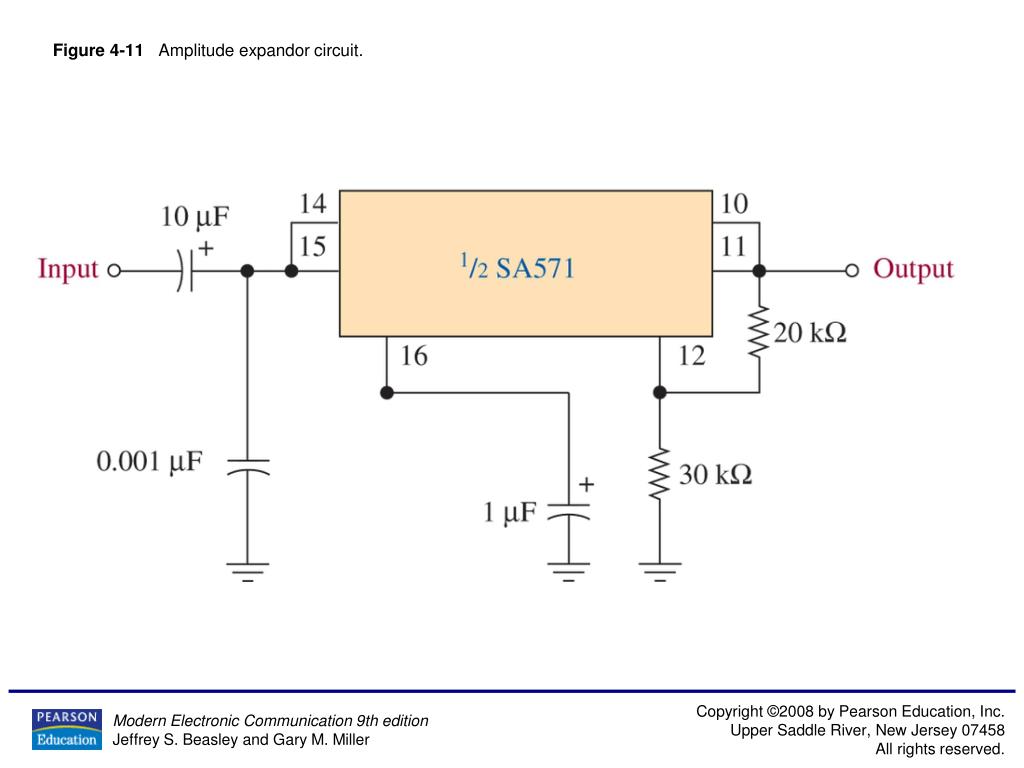
PPT Figure 41 Balanced ring modulator. PowerPoint Presentation, free
(G7C01) A balanced modulator is the circuit used to combine signals from the carrier oscillator and speech amplifier and send the result to the filter in a typical single-sideband phone transmitter. (G7C02)

Analog Communication lecture 12 Balanced Modulator and Ring Modulator
The MC1496 is a monolithic transistor array arranged as a balanced modulator-demodulator. The device takes advantage of the excellent matching qualities of monolithic devices to provide superior carrier and signal rejection. Carrier suppressions of 50dB at 10MHz are typical with no external balancing networks required.